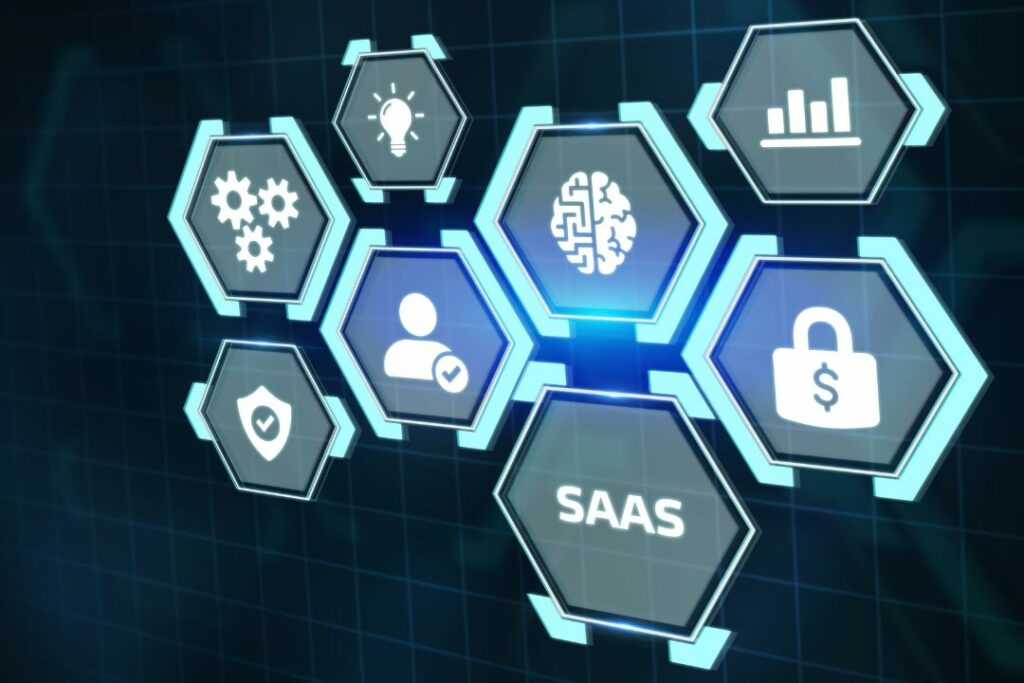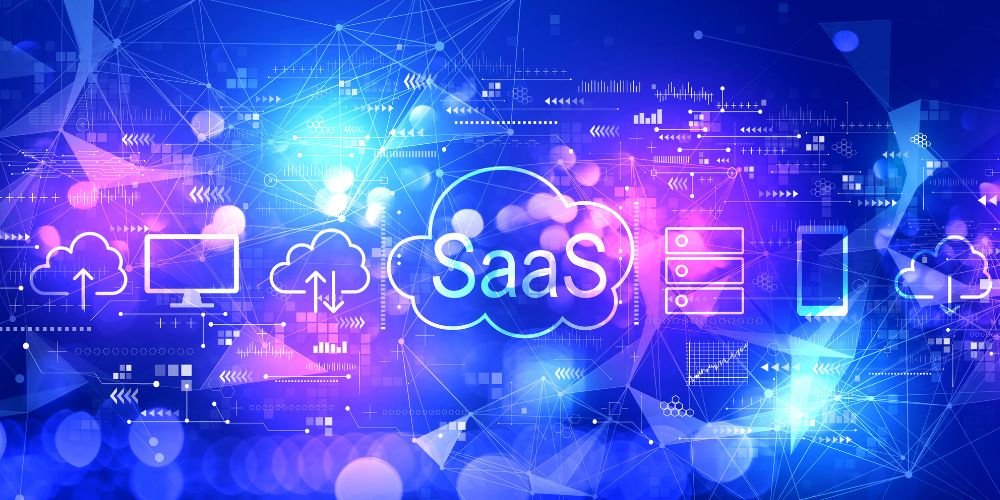Software as a Service (SaaS) is a way of delivering software applications over the internet. It’s become a popular choice for businesses of all sizes because it allows organizations to access software applications without worrying about the costs and maintenance associated with running the software in-house.
In this blog post, we’ll delve into exactly what SaaS is and explain how it works, including the benefits and challenges that come with using it.
So whether you are a business owner or an individual looking to understand the basics of SaaS, this guide will give you a comprehensive overview of everything you need to know about this critical technology trend.
What exactly is SaaS?
Software as a Service, or SaaS, is a way of using software over the internet, without having to install anything on your computer.
Instead of buying software that you install on your computer or server, you can simply access it through a web browser.
Think of SaaS as a service you subscribe to, much like Netflix or Spotify, where you pay a monthly or yearly fee to use the software.
It’s hosted by the provider and maintained by them, so you don’t have to worry about fixing any technical problems or installing updates.
It’s commonly used for business tools like:
- Customer relationship management (CRM)
- Project management
By leveraging SaaS tools, you can save money on software costs because you only pay for what you use. This makes SaaS perfect for new businesses and organisations who want to keep costs down.
You’ll be able to access the software from anywhere with an internet connection, making it great for remote work and international collaboration.
Additionally, because the software is maintained by the SaaS provider, you don’t have to worry about keeping it up to date or fixing any issues, which can be a big time-saver.
In summary, SaaS is a convenient and cost-effective way to use software, without the hassle of installation or maintenance.
SaaS example
Now we’ve got a great understanding of what SaaS let’s take a look at a real-life example.
One popular choice of a SaaS service is Salesforce, a customer relationship management (CRM) tool (CRM tools help businesses manage their interactions with customers and potential customers).
With Salesforce at hand, companies can store customer information, track sales/customer service interactions, and automate tasks such as email marketing and lead tracking.
This gives you a truly detailed view of all of your customer interactions, highlighting any potential issues with sales or onboarding instantly.
Salesforce is a cloud-based service, which means that the software and data are stored on remote servers and accessed over the internet, rather than on the user’s own computer.
By using Salesforce, businesses can save time and resources compared to managing customer information manually or with an in-house CRM system.
Better yet, Salesforce’s UX is easy to learn and use and it’s fully customisable to meet the specific needs of each business, making it a popular choice for SMEs all the way up to large international businesses.
What are the benefits of using Saas?
If you’re not convinced that SaaS is the right fit for your needs then take a look at all of the awesome benefits you’re missing out on.
Accessibility
Applications can be accessed from anywhere with an internet connection, allowing for remote work and collaboration.
Scalability
Service plans can be easily scaled up or down as needed, making it easier for businesses to accommodate growth or changes in demand.
Cost-effective
It’s nearly always more cost-effective than traditional software because there are no upfront costs for software purchases, installation, or maintenance.
Automatic updates
Providers handle software updates, ensuring that the latest version of the software is always available to users.
Security
SaaS providers often have robust security measures in place to protect customer data, making it a secure option for businesses.
Integration
Services can often be integrated with other business tools, making it easier for businesses to streamline processes and work more efficiently.
Customization
SaaS software can often be customized to meet the specific needs of each business, providing a tailored solution.
Flexibility
SaaS applications can be accessed from a variety of devices, including computers, smartphones, and tablets, making them easy to use on the go.
Reduced IT burden
With SaaS, businesses can offload the responsibility of managing software and hardware to the SaaS provider, reducing the workload for IT staff.
Focus on your core business
By using SaaS, businesses can focus their resources and energy on their core business, rather than managing software and IT infrastructure.
The history of SaaS
In 1999, Salesforce became the first company to offer a SaaS application for customer relationship management (CRM).
This model allowed businesses to access software on-demand and pay for only what they used.
The success of Salesforce paved the way for other SaaS companies like Google Apps and Dropbox, which offered productivity and collaboration tools in the cloud. By the mid-2000s, SaaS had become a mainstream software delivery model, and traditional software vendors were forced to adapt.
Today, SaaS is used in a wide range of industries and applications, from accounting and human resources to project management and video conferencing.
The future of SaaS looks bright, with the market expected to grow to over $200 billion by 2024.
As technology advances, we can expect to see new and innovative SaaS applications that help businesses streamline their operations and improve their bottom line.
Common questions about SaaS
We answer some of the internet’s most pressing queries around SaaS.
What is SaaS?
SaaS (Software as a Service) is a software delivery model in which software is hosted and provided by a third-party provider over the internet, rather than installed on local computers.
What are some examples of SaaS?
Some popular examples of SaaS include Gmail, Dropbox, Salesforce, Zoom, and HubSpot.
How is SaaS different from traditional software?
With traditional software, you would buy a license and install the software on your computer. With SaaS, you typically pay a subscription fee to access the software through a web browser. SaaS is often more affordable and easier to manage, as the provider handles maintenance and upgrades.
What are the benefits of using SaaS?
Benefits of using SaaS include reduced IT overhead, automatic updates and upgrades, scalability, and accessibility from any device with an internet connection.
Is SaaS secure?
SaaS providers typically implement strong security measures to protect their users’ data. It’s important to research and choose a reputable provider and to follow best practices for data security on your end as well.
How do I choose the right SaaS provider for my needs?
Consider factors like pricing, features, integration with other software, customer support, and user reviews when choosing a SaaS provider. It’s also important to consider your specific business needs and how the software can address them.




